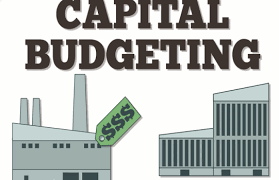
McKenzie Corporation’s Capital Budgeting Case Study
Order Instructions:
McKenzie Corporation’s Capital Budgeting Case Study
The case study, found on page 557 of your course text, deals with the process of corporate budgeting and the types of decisions that must be made. After reading the scenario:
• Briefly answer the six questions at the end (4 to 6 sentences each).
• Include all calculations you were asked to provide.
SAMPLE ANSWER
Question 1. The Expected Value of the company within one year
The economic growth probabilities without expansion are;
Low .30 $25,000,000 $27,000,000
Normal .50 30,000,000 37.000.000
High .20 48,000.000 57,000,000
The expected value without expansion is
(0.3 x 22) + (0.5 x 35) + (0.2 x 45) = 33.1
The expected value with expansion
(0.3 x 26) + (0.5 x 48) + (0.2 x 57), minus the cost of financing (43.2-9) = $34.2 million
With these scenarios, the company would be better off with the expansion since they would be making more than 1 million dollars (34.2-33.1) = $1.1m.
Question 2. Expected value of company debt within one year
Without expansion, the expected value of the company’s debt would be $28m since all of it would be financed by the equity funds. The value of the company’s debt with low economic growth would be bad since it would negatively affect the company value while seeking financing (Bruce, 2003). The expected value of the company debt within one year is very important since it determines their ability to get financing within the following year.
Question 3. Value expected from expansion
The expected value without expansion would be;
The expected value without expansion is (0.3 x 22) + (0.5 x 35) + (0.2 x 45) = 33.1
The expected value with expansion is (0.3 x 26) + (0.5 x 48) + (0.2 x 57), minus the cost of financing (43.2-9) = $34.2m.
Therefore, the overall value created with this expansion is $1.1m. In this scenario, the additional value will be for the stakeholders since the debt is expected to remain the same and the expected value of stakeholders would be $1.1m and zero for the bondholders.
Question 4. The impact of non-expansion on the price of bonds
The prices of bonds will not be affected by the non-expansion of the company since the prices of bonds and the value of the stakeholders will remain the same. However, in case where expansion happens, there will be more equity that will in turn affect the debt to equity ratio to change significantly. This change in equity to debt ratio will also have an impact on the rate of bonds and this value will also affect the return on bonds and the bond market (Wilmott, 2007).
Question 5. Implications of non-expansion on the borrowing needs
If the company fails to expand, there will be implications on the borrowing needs in that the equity will be the same and the company will fail to get financing due to lack of debt equity. The availability of greater equity, which the financiers are keen on, will be lacking and this will lower the borrowing capability of this company. On the other hand, the ability of the company to expand will put them in a position to have more equity that will make them get more financing (Ross et al, 2013). In addition, the expansion will also help their borrowing needs in the following year since they will always have financing through equity.
Question 6. How Equity financing would affect the company
The bond covenant will force the expansion to be financed by equity, which would be a different scenario if it is financed by cash. The benefit of financing the expansion by cash is that the company would not have to pay for the cost of changing equity to cash, making it less expensive (Bailey & Lopez, 2013). On the other hand, the bond expansion would be expensive when financed by equity since the company would have to undergo additional costs of changing equity to cash.
References
Bailey, D. & Lopez-de-Prado, M. (2013): “The Strategy Approval Decision: A Sharpe Ratio Indifference Curve approach”, Algorithmic Finance 2 (1): 99-109
Bruce J. F. (2003). Investment Performance Measurement. New York: Wiley
Ross, S. R., Westerfield, R. W., & Jaffe, J. (2013). Corporate finance (10th ed.). NY:McGraw-Hill.
Wilmott, P. (2007). Paul Wilmott introduces Quantitative Finance (Second Ed.). Wiley
We can write this or a similar paper for you! Simply fill the order form!




